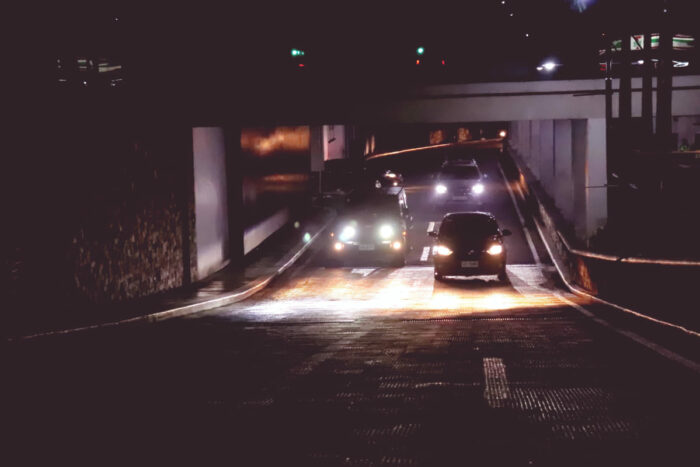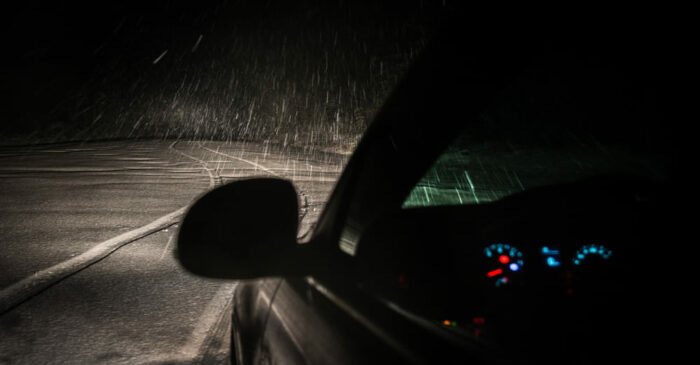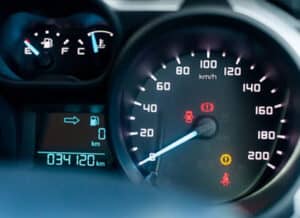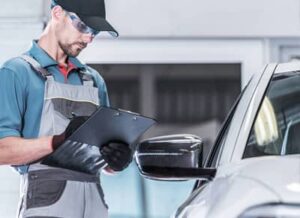9 Tips for Driving at Night on Highways
According to the NHTSA, fatal accidents are three times more likely to happen at night due to reduced visibility. This shouldn’t be a problem for car drivers if they drive with the right tips in the back of their minds.
Some of the safety tips you should hold on to while driving a car at night are:
- Your headlights are your friends.
- Keep your windshield and windows clean.
- Watch out for pedestrians, cyclists, and wildlife.
- Get an eye test.
- Don’t drive when tired.
- Learn how to drive defensively.
- Avoid two-lane highways whenever possible.
- Watch your speed.
- Stay alert.
1. Your headlights are your friends.
Reduced visibility is the major reason why most accidents are recorded at night. With their headlights, car owners and drivers can easily overcome this challenge whenever they are driving at night. Car drivers and owners should properly test their headlights, low beams, high beams, daytime running lights, turn signals, brake lights, and rear lights before driving at night. If your lights malfunction, you must have them fixed and functioning properly, as they may just end up saving your life.
Not only do they increase your visibility, they also increase your vehicle’s visibility to oncoming drivers. This is one reason why it is recommended for all car drivers to make sure their headlights are properly angled. If the light beams are too low, you may lose visibility, and if they are too high, you may reduce the visibility of oncoming drivers. To get their headlights fixed properly, drivers should visit a car repair shop and get a professional mechanic.

2. Keep your windshield and windows clean.
Having good lighting is great, but what use is good lighting when you have dirty or damaged windows? When sediment and dirt settle on a car’s windshield and windows, they form a thin layer between drivers and the road at night and reduce visibility. Drivers must be sensitive to the buildup of sediment and even mist while driving at night. They also have to be deliberate about keeping their windshields and windows clean if they want to drive safely.
Make sure to take a sponge and soap to wash your vehicles before stepping out for a late-night drive.
3. Watch out for pedestrians, cyclists, and wildlife.
Pedestrians and wildlife can be hazards while driving at night. You never know who or what may be on the road. Children, pedestrians, and cyclists have reduced visibility at night as well and may not see your vehicle on time. It is your responsibility as a car driver to ensure that your eyes are alert for children, the elderly, other pedestrians, cyclists, and animals that may stumble into the road at any time.
Whenever a child, cyclist, pedestrian, or animal suddenly darts into the highway, slow down your vehicle and stop it. Avoid swerving, as this may cause damage to you, your vehicle, and the environment.
READ ALSO: The future of car-reporting technology and how it benefits consumers
4. Get an eye test.
Late-night driving requires great eyesight to see clearly at night while driving. The reduced visibility makes it difficult to navigate the road easily, and poor eyesight only makes things worse and puts lives at risk. During night drives, the eyes are made to adjust quite a number of times to the darkness to enable drivers to see clearly at night. With vision problems, drivers may find it difficult to see clearly and navigate properly on the road at night.
If you have vision problems, especially when there is reduced lighting, it is recommended that you avoid driving a car at night and, whenever necessary, drive with recommended glasses. If you have good eyesight, you should be aware that glare becomes a problem as you get older, and it is recommended that you have an eye test once a year to check the status of your eyesight.
Quick Tip: If you are planning to go on a long trip, then you must be aware of your vehicle’s condition and reliability before hitting the road. A mechanical inspection is one way to confirm a vehicle’s reliability, but a vehicle history report is another great way to gain access to all the accident and damage records of a vehicle.
A vehicle history report is a document that provides the records and history of a vehicle. Other details found in a vehicle history report from Instant VIN Reports include service history, maintenance history, theft records, lien and loan records, title brand records, open recalls, accurate vehicle specifications, and more.
5. Don’t drive when tired.
Simply put, drowsy driving kills. According to the NHTSA, in 2017, 91,000 police-reported crashes involved drowsy drivers, and these crashes led to approximately 800 fatalities and 50,000 injuries. Fatigue usually kicks in between the hours of midnight and 6 a.m. for drivers, and it is just a way for the human body to regulate sleep. During this period, drivers are more likely to be involved in accidents and are encouraged to drink one to two cups of coffee and pull over for a short nap in a safe and well-lit place.
To avoid being tired while driving at night on highways, drivers are encouraged to:
- Get enough sleep on a daily basis. Eight hours of sleep daily is recommended if you want to drive safely without fatigue on highways at night.
- Avoid alcohol before or while driving.
- Check your medications for side effects and make sure they don’t make you drowsy before you hit the road at night.
If possible, avoid driving between the hours of midnight and 6 a.m. This way, drivers are less susceptible to accidents related to fatigue while driving.
6. Learn how to drive defensively.
Defensive driving entails anticipating potentially hazardous situations while driving on the road at all times. When driving on highways at night, the driver should be alert and prepared to take the next appropriate action if an unexpected event occurs.
Some of the techniques for defensive driving include:
- Expect other drivers to make mistakes.
Slow down. - Use a vehicle with high safety features and ratings.
- Pay attention to traffic lights and signs.
- Monitor your blind spots and don’t be found in another vehicle’s blind spot.
- Prepare for stormy weather.
- Maintain your vehicle, and more.
Driving defensively is one of the most important driving tips on the highway. Make sure you are prepared for anything and everything while driving. Defensive driving at night reduces the risk of death by 45 percent and cuts the risk of injury by 50 percent; keep that in the back of your mind while driving.

7. Avoid two-lane highways whenever possible.
It is not compulsory for drivers to run away from two-lane highways, but they have to drive with extra precision when they have to drive on two-way highways at night. Two-way highways are typically narrow and make it difficult to maneuver around other vehicles, and the fact that visibility is reduced doesn’t really help matters.
When a driver finds themselves on a two-lane highway, they have to make sure their headlights are used correctly. According to the NHTSA, nighttime glare is usually worse on two-lane highways, and drivers should be ready to adjust their headlights to avoid accidents and promote safe night driving on highways.
READ ALSO: What Is The Most Reliable Used Car in America?
8. Watch your speed.
Based on the condition of the road, visibility, and traffic, drivers should be willing to adjust their speed to prevent accidents. Even if the road seems clear, don’t overspeed at night. Nothing good ever comes from driving at high speeds, and it only increases the chances of a fatal crash. According to the NHTSA, overspeeding led to 11,258 deaths in 2020, and 52% of these speeding-related deaths involved drivers not using their seatbelts.
The fact that you should not drive fast does not imply that you should drive too slowly. Driving too fast or too slow at night comes with equal risks. This is why it is recommended that the driver determine the right speed based on the condition of the road they are using.
9. Stay alert
While driving a car at night, drivers must remain alert at all times and ensure that they are prepared for anything or any driver. Several reasons why drivers must strive to be alert at all times include:
- Reduced visibility.
- Easily spot fatigue and prevent drowsy driving.
- Easily spot impaired drivers.
- Easily navigate through unfamiliar surroundings.
- Easily spot children and wildlife on the highway.
With poor visibility, fatigue, and other factors, most car owners find it really difficult to drive on highways as they are unable to navigate properly. This article has explained most of the tips that every car owner should have in the back of their minds before late-night driving on highways: keep your headlights, windshields, and windows in good condition; keep an eye out for pedestrians; and be alert while on the road. Remember to also drive defensively, avoid drowsy driving, and frequently get eye tests—at least on a yearly basis.
Frequently Asked Questions
What is the best rule for safe night driving?
Safe night driving comes with a lot of rules to pay attention to, and they are:
- Your headlights are your friends.
- Keep your windshield and windows clean.
- Watch out for pedestrians, cyclists, and wildlife.
- Get an eye test.
- Don’t drive when tired.
- Learn how to drive defensively.
- Avoid two-lane highways whenever possible.
- Watch your speed.
- Stay alert.
Keep these tips in mind, and driving a car at night will be a piece of cake.
How do I prepare for a night of driving?
The first thing you should do to prepare for a night of driving is to get enough sleep during the day. Then, ensure that your headlights are functioning properly and you can use them easily; make sure your windshields and windows are spotless; watch your speed; stay alert; practice defensive driving; get an eye test; and watch out for wildlife while on the road.
Why should you drive slower at night?
Driving at a slower speed and not overspeeding is more advisable during late-night driving. At night, there is reduced visibility, and you may not be fully aware of your surroundings and the condition of the road. Using your headlights is good, but even with headlights, response time is usually slower at night. This is why it is recommended to drive a little slower than you normally would.










